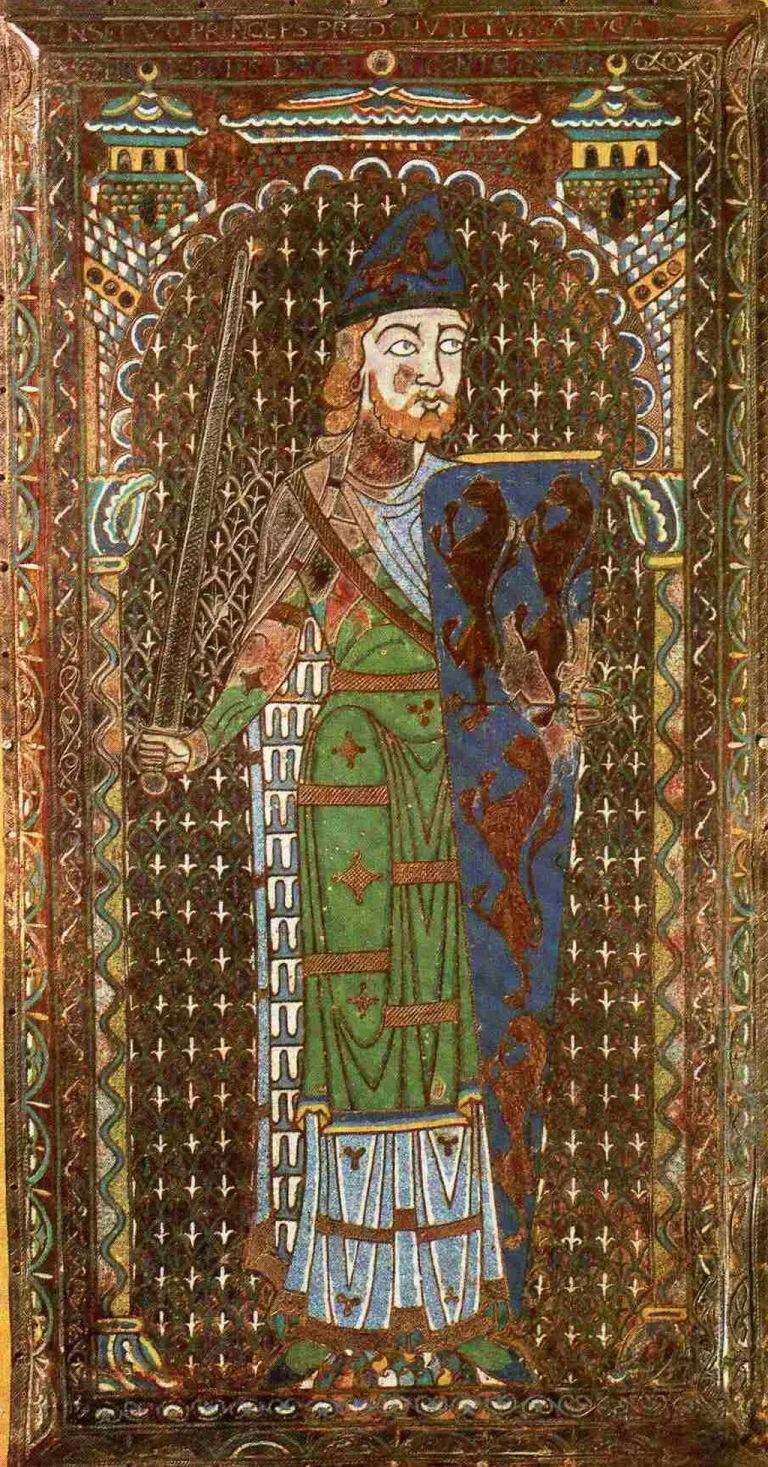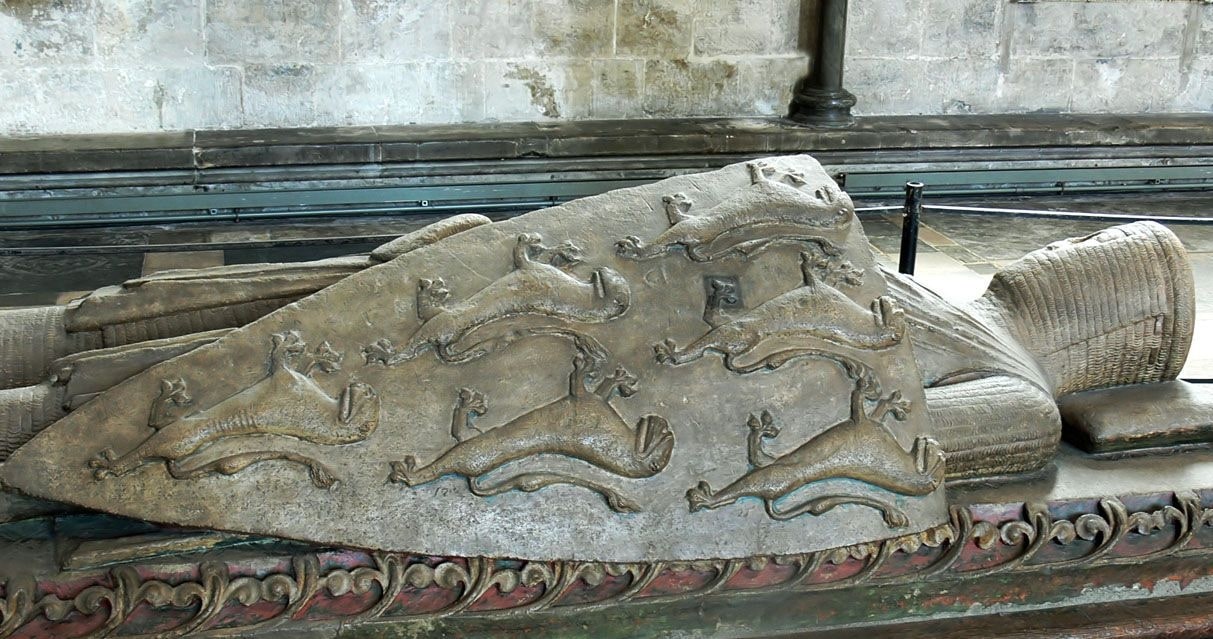Héraldique
Héraldique
Scaricamazza
·1723·
Scaricamazza
·1723·
What is the first example of a coat of arms?
What is the first example of a coat of arms?
It’s a legitimate question; we don’t deny it. The best contemporary historians, however, remind us that a definitive response is not decisive, in fact: «The appearance of arms is not due to any individual initiative but was a social phenomenon that took place over a fairly long period of time, between approximately 1120 and 1150»¹
We, however, will give our answer, honest and clear: the first example of a coat of arms that has come down to us would be the enamelled funeral plaque of Geoffrey Plantagenet, Count of Anjou and Duke of Normandy, originally in Le Mans Cathedral (the church is one of the finest examples of Gothic-Roman architecture in all of France), now the plaque is in the Musée d’archéologie et d’histoire du Mans.

Enameled funeral plaque of Geoffrey Plantagenet, Count of Anjou and Duke of Normand, Musée d’archéologie et d’histoire du Mans, France.
Let’s observe two points. We write “came down to us” because we do not exclude the possibility of other slightly earlier ones that have been lost, destroyed, or badly dated; we cannot rule it out. Secondly, we utilize the conditional because we are not certain that the duke used the arms depicted on his shield. Let’s explain the problem right away. The chronicles written by John of Marmoutier, around 1170, tell that, in 1127-28, Geoffrey was knighted by his father-in-law, Henry I of England. Godfrey’s wife was the Empress Matilda, widow of Henry V, Holy Roman Emperor. On that occasion, the king would have allowed him to bear a blue shield, azure, decorated with gold lions, or. The splendid enamel tomb plate dates about 30 years after the investiture. Geoffrey died in 1151 and the enamel would be from 1155.
What shows us that we are faced with a real coat of arms, and not just with a personal emblem very similar to the later shields? The composition and colours, the tinctures, are consistent with heraldic rules, the figures are placed on a shield, on its field, and above all we have proof of the heredity of the coat of arms. Observe this tomb in Salisbury Cathedral.

Tomb of William Longespée in Salisbury.
It is of William Longespée, Earl of Salisbury and half-brother to “Coeur de Lion”. William Longespée died in 1226. His shield is the same as Geoffrey’s: “Azure, six lions rampant or, 3,2,1″. It is no coincidence: that William Longespée was Geoffrey’s illegitimate grandson.
¹Pastoureau, M. (1997), Heraldry: its Origins and Meaning, London: Thames & Hudson, p 19.